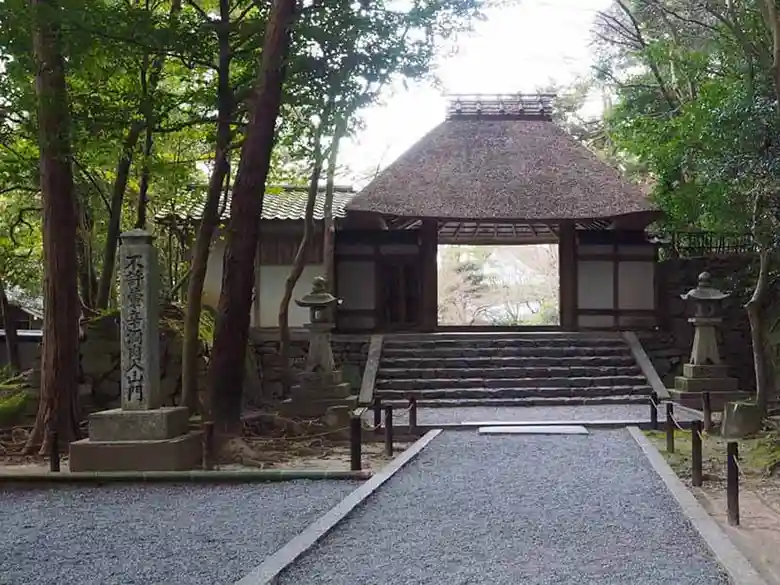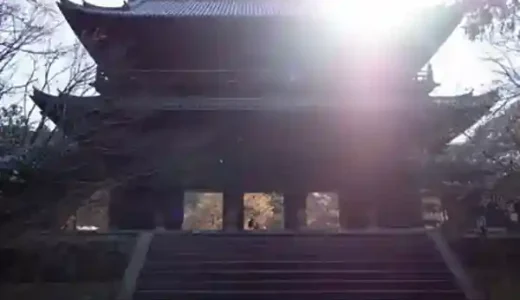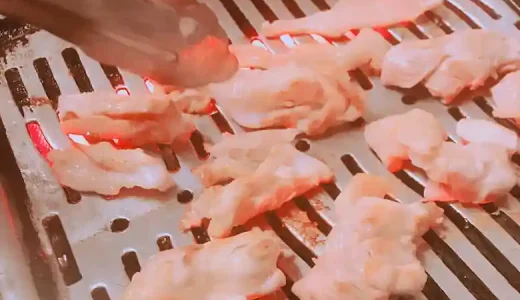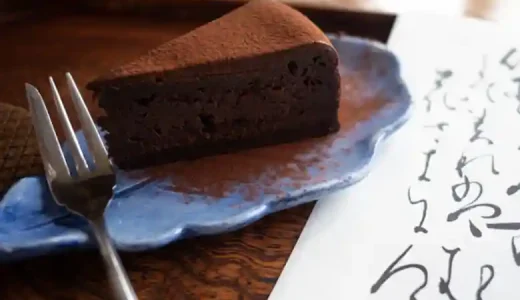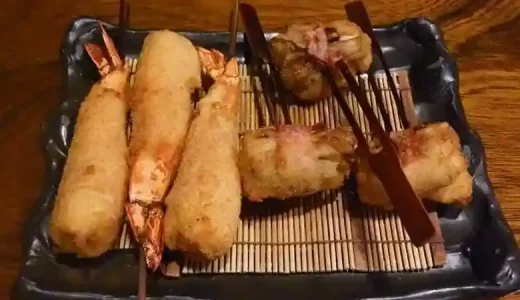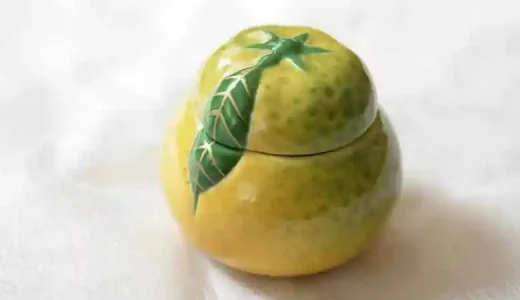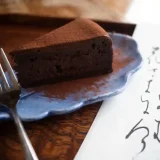I traveled to Kyoto and visited Honen-in. The grave of Junichiro Tanizaki (1886-1965), one of Japan’s greatest writers, is located at Honen-in. Junichiro Tanizaki is one of Japan’s foremost writers of modern Japanese literature. The worldwide acclaim for his work made him a finalist for the Nobel Prize in Literature in 1960 and 1964. I have always wanted to see his grave at this temple because I love Junichiro Tanizaki’s novels.
Honen-in
On this day, I headed to Honen-in after viewing Nanzen-ji. On the way, I followed the Philosopher’s Walk northward along the foot of Higashiyama. Philosopher’s Walk is a walking trail along the Lake Biwa Canal at the foot of Higashiyama. It is a beautiful section of nature where the scenery changes with the seasons: cherry blossoms in spring, green trees in early summer, and autumn leaves in fall.

I walked from Nanzen-ji to Honen-in, which took about 20 minutes.
Temple gate(San-mon)
Going left on the approach to the temple, you will see a Sukiya-zukuri-style temple gate. Green moss covered the thatched roof, harmonizing with the surrounding landscape.
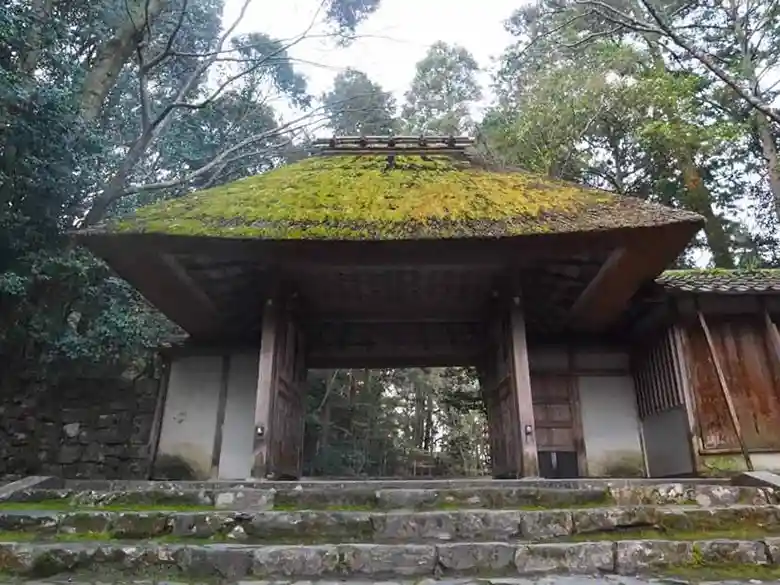
The garden of Honen-in, seen from the path, was like a painting with the gate as a frame.
White sand platform
After passing through the gate, there are two rectangular sand platforms on both sides of the path. This sand is called the “White sand platform” and represents “water.”
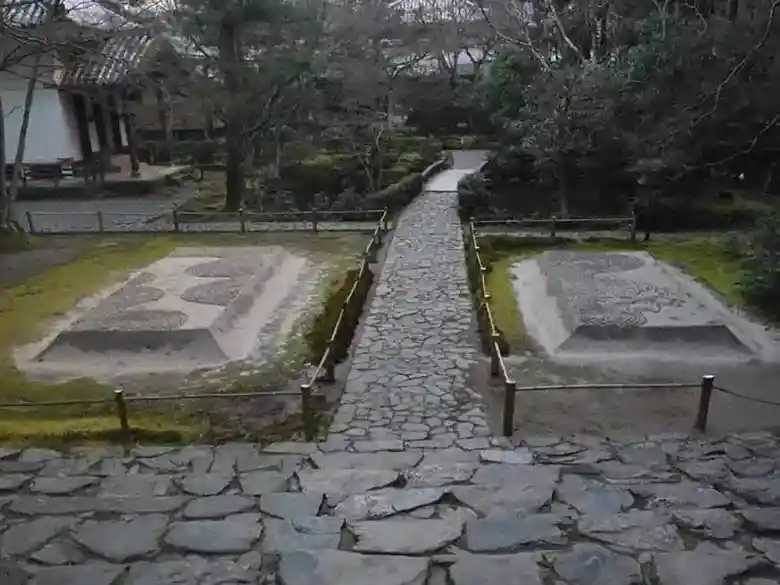
Passing through the sand platforms purifies the body and soul and allows one to enter the cleansed area.
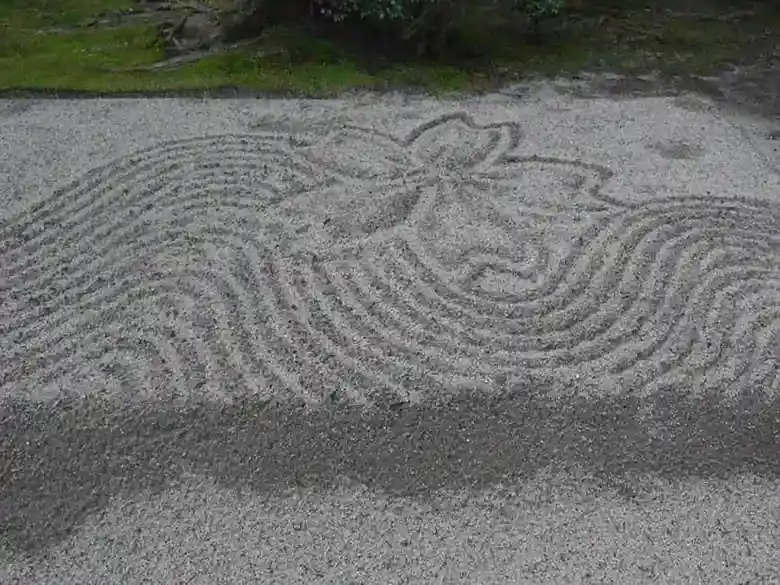
When I visited at the end of March, there was a pattern of cherry blossoms on the sand platform. These patterns change according to the season, such as water patterns, waves, whirlpools, leaves, and flowers.
Behind the white sand platforms, there was a beautiful moss-covered garden. The garden was a Pure Land style garden. The pond extends in front of the temple building to recreate the world of the Pure Land.
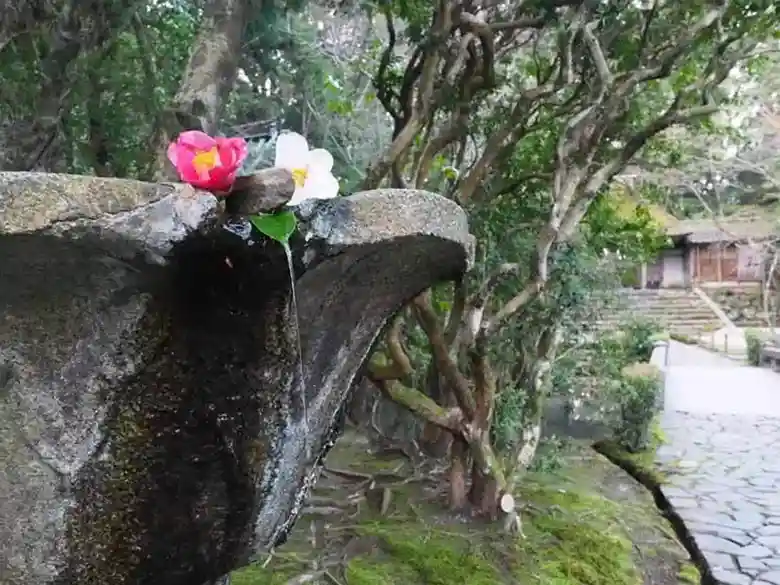
Camellias were floating in a chozubachi made of stone. The chozubachi is a source of purifying water for washing hands and rinsing the mouth before visiting shrines and temples. Honen-in is famous for its camellias.
I was the only visitor at this time. Although the temple’s precincts are small, I felt the clean air of Higashiyama in Kyoto.
Junichiro Tanizaki’s graveyard
After visiting the temple, I walked out of the temple gate and found the cemetery on the left side.

A weeping cherry tree bloomed in a high place at the far end of the cemetery. Under this cherry tree was the grave site of the great Japanese writer Junichiro Tanizaki (1886 – 1965).

Across the cherry tree were two tombstones made of natural Kurama stone. The one on the left had the word “寂 (Jaku)” engraved on its surface in Japanese. The term “寂 (Jaku)” means entering a state of enlightenment that transcends life and death in Japanese.
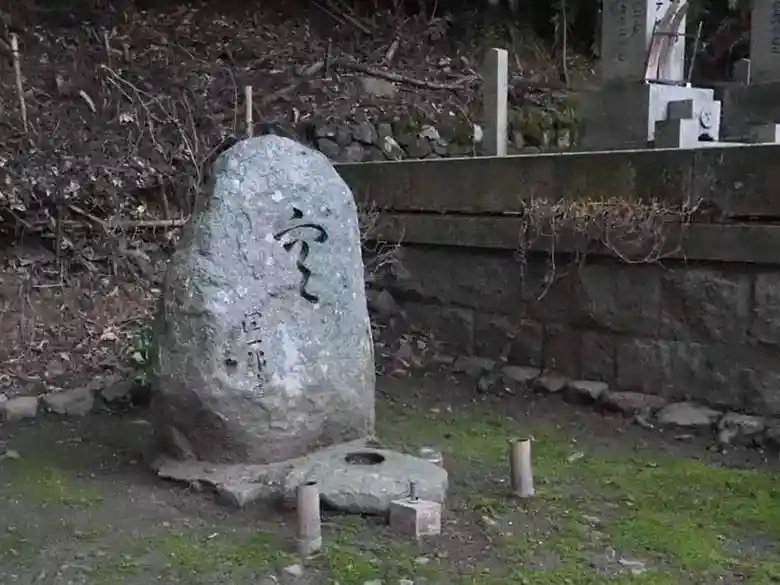
To the right, the epitaph on the tombstone reads the word “空 (Kuu).” The characters on the gravestone were in Junichiro Tanizaki’s handwriting.
On the left was the grave of Mr. and Mrs. Tanizaki, and on the right was the tomb of Mrs. Tanizaki’s sister Shigeko and her husband. Tanizaki was protecting his sisters Matsuko and Shigeko, who were the models for Junichiro Tanizaki’s novel “The Makioka Sisters (細雪, Sasameyuki).”
Novel “Sasameyuki (細雪)”
The title of the English translation is” The Makioka Sisters,” but the original Japanese title is” Sasameyuki.” Sasameyuki means “lightly falling snow.” In a poetic sense, however, it evokes the image of cherry blossoms falling in early spring, which Japanese people find elegant. The translator, Edward George Seidensticker (1921 – 2007), had difficulty coming up with a title because it was difficult to convey such a feeling in English.
The novel depicts the lives and fates of four sisters of the Makioka family in Semba, Osaka. The period is the five years before the Pacific War began in 1941. Mrs. Matsuko and Matsuko’s sister Shigeko, who lie in the same cemetery as Tanizaki, were the models for the Makioka family’s second daughter Sachiko and third daughter Yukiko.
During the Pacific War, the Japanese military banned the publication of” Sasameyuki.” However, Junichiro Tanizaki continued writing and published the entire book in 1948, three years after the war ended. In 1957, Edward George Seidensticker (1921 – 2007) published an English translation of the novel under” The Makioka Sisters.” The book has been translated into more than 15 languages and published worldwide.
Weeping cherry tree
Before his death, Junichiro Tanizaki planted a weeping cherry tree over his grave. This cherry tree is the weeping cherry tree at Heian Shrine, which Junichiro Tanizaki loved.
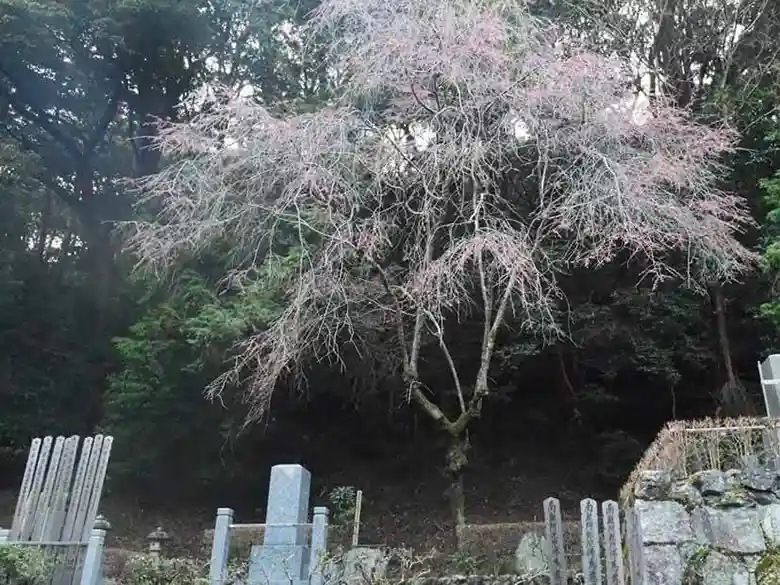
The cherry blossom viewing party at Heian Shrine is a regular event of the Makioka family in “Sasameyuki.”
In 1956, Junichiro Tanizaki moved from Kyoto to Izu. After his move, Tanizaki visited Kyoto every spring to enjoy the cherry blossoms. Junichiro Tanizaki wanted a view like that of Heian Shrine in spring. For this purpose, he brought cherry trees from Kyoto and planted them at his new residence in Izu. Tanizaki’s stories about cherry blossoms are endless. I hope you will visit Kyoto in the spring and enjoy the cherry blossoms.
